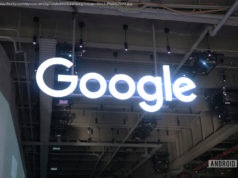Array
Apple has been integrating augmented reality into its devices for years, but it looks like the company will jump right into the territory of Meta, Microsoft and Magic Leap with a long-expected mixed-reality headset in 2023. More details on the headset keep arriving, and right now it’s increasingly clear that the device could be something like Meta’s most recent stand-alone VR hardware, with higher-end optimizations and features that could push the device even further… and at a higher price.
The announcement of this AR/VR headset has been sliding for a while, and now seems like it’ll be revealed at Apple’s WWDC developer conference, with a possible release date later in the year. According to the most recent reports, the hardware will have a separate battery pack and a slim visor design, and will use prescription lens inserts. It may not be the final form of the ideal headset Apple is intending to make, but it’s a sort of foot in the door.
This year is already full of new VR and AR headsets, from the PlayStation VR 2 and Vive XR Elite to the Meta Quest 3. Apple has already laid down plenty of AR clues, hinting at what its mixed-reality future could hold, and it’s been active in AR on its iPhones and iPads for years.
As far as what its device could be like, odds are strong that the headset could work from a similar playbook as Meta’s recent high-end headset, the Quest Pro, with a focus on work, mixed reality and with eye tracking on board.
Here’s what we’re expecting.Is its name Reality Pro? Is the software called xrOS?
Gurman suggests the operating system for this headset could be called «xrOS,» but that may not indicate the name of the headset itself. Recent trademark filings reported by Bloomberg showed the name «Reality» showing up a lot: Reality One, Reality Pro and Reality Processor. Apple’s existing AR software framework for iOS is named RealityKit, and previous reports suggested that «Reality OS» could be the name for the new headset’s ecosystem.
No one really expected the Apple Watch’s name (remember iWatch?), so to some degree, names don’t matter at this point. But it does indicate that Apple’s moving forward on a product and software, for sure.The first of several headsets?
The headset has been cooking for a long while. Reports have been going around for several years, including a story broken by former CNET Managing Editor Shara Tibken in 2018. Apple’s been building more advanced AR tools into its iPhones and iPads for years, setting the stage for something more.
Whatever the headset might become, it’s looking a lot more real lately. A detailed report from The Information last year discussed likely specs, which include what Bloomberg’s Gurman says is Apple’s latest M2 chip. According to another report from Bloomberg earlier last year, Apple’s board of directors has already seen a demonstration of the mixed-reality headset.
But a more recent detailed breakdown of the headset’s features by Gurman suggests a product that’s targeted at pro customers, with limited battery life and a set of unique social functions.
Apple had been reportedly targeting AR glasses after this headset, but those may be pushed off for now in favor of a more affordable mixed reality VR-type headset after Apple releases this first expensive «Gen 1» model.
This VR-type headset could eventually be the start of several lines of products, similar again to how Meta has been targeting future AR glasses while also making lower-cost and higher-end VR gear.Mixed reality, eye tracking, and a digital crown
Gurman’s recent January report details a lot of the headset’s functions, and emphasizes an array of cameras that will allow pass-through camera-enabled mixed reality much like the Quest Pro. A combination of eye and hand tracking will be used for interaction, while a digital crown will allow toggling between AR and VR modes.
The report also points to the headset doubling as a connected display for Macs (current VR headsets can also do this), enabling more realistic avatar chat for one-on-one FaceTime calls, and having a separate battery pack attached by a cable to the headset.
Gurman suggests a focus on gaming, media and communication on this initial first-wave headset, and in particular on immersive VR video. In terms of communication, Gurman believes FaceTime using the rumored headset could also rely on Memoji and SharePlay: Instead of seeing the person you’re talking to, you’d see a 3D version of their personalized Memoji avatar. The level of realism could scale depending on the number of people in a call.
Eventually, Apple’s plans for this headset could become larger. The company’s «goal is to replace the iPhone with AR in 10 years,» Kuo explained in a note to investors, seen by MacRumors. The device could be relatively lightweight, about 300 to 400 grams (roughly 10.5 to 14 ounces), according to Kuo. That’s lighter than Meta’s Oculus Quest 2. However, it’s larger than a normal pair of glasses, with early renders of its possible design looking a lot more like futuristic ski goggles. Gurman’s reports also point to the AirPods Max as a hint of what the design feel will be like.
The headset could be expensive, maybe as much as $3,000 or more, with its Sony-made high-res displays, eye tracking and cameras that can scan the world and blend AR and VR together. The Information reported on these possibilities back in 2021, and it’s to be expected, considering the Quest Pro costs $1,500 and AR headsets like the Magic Leap 2 and HoloLens 2 are around $3,000.
Apple’s headset seems to line right up with how VR is evolving: lighter weight, with added mixed-reality features via more advanced pass-through cameras. Much like the Quest Pro, this will likely be a bridge to future AR glasses efforts.
Previous reports on Apple’s AR/VR roadmap suggested internal disagreements, or a split strategy that could mean a VR headset first, and more normal-looking augmented reality smart glasses later. But recent reports seem to be settling down to tell the story of a particular type of advanced VR product leading the way. What’s increasingly clear is that the rest of the AR and VR landscape is facing a slower-than-expected road to AR glasses, too.
VR is a more easily reachable goal in the short term.
Apple has been in the wings all this time without any headset at all, although the company’s aspirations in AR have been clear and well-telegraphed on iPhones and iPads for years. Each year, Apple’s made significant strides on iOS with its AR tools. It’s been debated how soon this hardware will emerge — this year, the year after or even later down the road — and whether Apple proceeds with just glasses, or with a mixed-reality VR and AR headset, too.
I’ve worn more AR and VR headsets than I can even recall, and have been tracking the whole landscape for years. In a lot of ways, a future Apple AR headset’s logical flight path should be clear from just studying the pieces already laid out. Apple acquired VR media-streaming company NextVR in 2020 and it bought AR headset lens-maker Akonia Holographics in 2018.
I’ve had my own thoughts on what the long-rumored headset might be, and so far, the reports feel well-aligned to be just that. Much like the Apple Watch, which emerged among many other smartwatches and had a lot of features I’d seen in other forms before, Apple’s headset probably won’t be a massive surprise if you’ve been paying attention to the AR and VR landscape lately. And, much like the Apple Watch, I’d expect Apple to steadily improve the hardware and software in future generations.
Apple declined to comment on this story.Launch date: Looks set for 2023
New Apple products tend to be announced months before they arrive, maybe even earlier. The iPhone, Apple Watch, HomePod and iPad all followed this path.
The latest reports point to possible delays for the release of the headset to the second half of 2023, but an event announcing the headset could happen soon.






